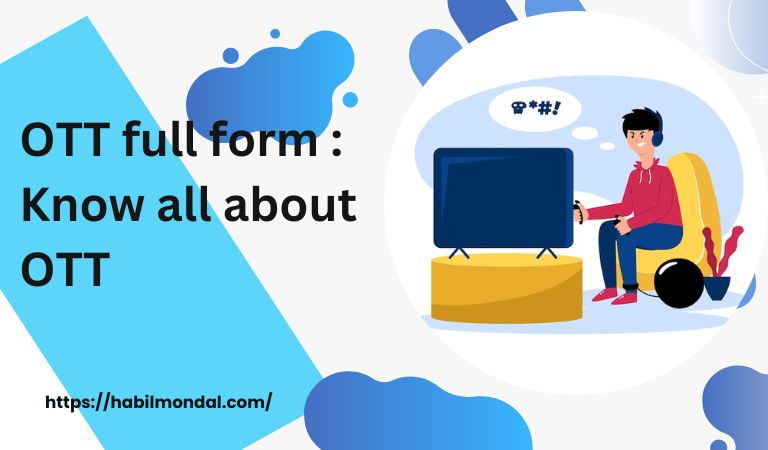Written communication and discussion between the employer and the job seekers are the primary forms of employment communication. The employer interacts with potential employees or job seekers to discuss open positions, business culture, bonuses, benefits, security, etc.
Employers employ innovative strategies to draw in and keep the top personnel. Potential workers communicate with the company about their interest in and readiness to work with them in various ways.
Further, Employment communication refers to the compelling method by which a job applicant persuades an employer to recruit them by demonstrating that their knowledge, experience, and abilities best meet the requirements of the position. Instead of being a single event, a job hunt is a process.
The job search requires the job seeker to put time and effort into it. As a result , Finding a decent job, especially in fierce competition, is not as difficult as it might seem. Another point that has to be made in this situation is that the person who wins the prize (in this case, the job) is not always the one who is the “most gifted,” but rather the person with the best job search techniques and performance.
What is employment communication?
Employment communication is the exchange of information, concepts, and emotions among employees and management inside a corporation. It can take place verbally or electronically via various platforms, including intranets, mobile applications, and collaborative tools.
For a firm to be healthy and strong, employee communication is essential. Without it, managers would be unable to effectively guide the staff they are responsible for. So, A company’s employment communication plan will be more successful if carried out as effectively as possible.
Employment communication benefits
Boosts staff engagementEmployee engagement directly correlated with effective employee communication. Employees are more engaged in their everyday tasks when they have access to the information they need to perform their jobs effectively and the capacity to provide feedback. They also feel more connected to the business and one another, heard, and productive.
Maintains workplace harmony :
Misunderstandings, bottlenecks, and other problems may result from improper communication between employees and supervisors. All of these issues can be stressful and disturb the peace at work. Employee communication that is open and honest helps to both prevent problems and rapidly address them when they do arise. This maintains a pleasant work environment.
Helps manage a diverse workplace :
Employees from various origins, philosophies, and points of view may unite around a common goal and work well as a team because of inclusive communication. Companies prosper when everyone feels their voices are heard, and their thoughts are respected.
Read more:
Top 10 Domain Hosting Companies in Bangladesh in 2023
Verbal and Nonverbal communication explain information
Improves the employee experience :
The purpose of workplace communication extends well beyond providing a channel for workers to learn about corporate news. By instilling a feeling of purpose in their everyday tasks, effective communication improves the employee experience. Employees feel connected, included, and empowered to perform at their highest level at work when they believe they have access to all of the resources, skills, and knowledge they need to prosper both within and outside of the office.
Encourages innovation :
Both teamwork and innovation promoted through workplace communication. Creation is inevitable when team members can communicate effectively, listen to everyone’s viewpoints, and work as a cohesive one.
Increases inter-departmental cooperation :
The success of each department inside a corporation depends on the success of the others, even though each department within a firm serves a distinct purpose and function. For continued cooperation and assistance, departments must be able to interact with one another. Companies will prosper when all departments are coordinated and working together.
Moreover, A department and the entire organization may suffer if isolated from communication and out of step with the others.
Importance of effective employment communication
Although it’s hardly rocket science, employment communication can detrimental if done incorrectly. Instead, let’s keep things positive and consider the advantages of having effective staff communication:
Employee engagement:
If you communicate with your staff regularly and effectively, they will feel more invested in the business and have a better attitude about their work and the firm.
Consistency: If your staff know what they are trying to accomplish inside the company, you will see a lot more consistent approach and less chance for people to interpret what you have stated differently.
Feedback:
Regular contact allows individuals to join in a constructive dialogue. After all, communication is a conversation, and discussion requires two individuals to communicate, voice their concerns, or provide feedback. This encourages a culture of information and idea exchange.
Understanding of organizational goals:
Employees who are effectively communicated understand how to connect their professional aspirations with those of the business. They can comprehend how they fit into a larger context.
True! Change is the only constant. But can your staff members adjust to unexpected changes? The workforce will react favorably to change if it is adequately explained. Additionally, it aids in locating rising stars inside your business that are open to change.
5 Tips to improve employment communication
Most firms carefully consider how to engage their external audience yet casually overlook their workers’ most crucial constituency. One thing that sets high-performing companies apart is that they prioritize employee communication!
The top 5 ideas for improving employment communication in your business are listed below.
Communicate with clarity : The use of jargon or technical phrases excessively can only increase confusion. Be precise while communicating.
Set the tone : The organization’s management and leadership must establish the proper tone. They must be approachable and comprehend the connection between successful strategic employee communications and achieving company goals.
Know your employees : Knowing your staff is all that is required; you do not need to communicate with them in numerous ways. Regular employee surveys are conducted to learn how your team sees things.
Use several channels: Most individuals need to hear or read the message more than once to avoid being mistranslated. Use various methods to spread your message and ensure that people receive it quickly.
Measure the effectiveness : Communication should always have a clear goal; otherwise, its entire point is lost. There are various techniques to promote communication, but what good is it if nobody listens? Assess employee engagement frequently and discover whether the communication plan is effective.
Many firms rely on Question Pro Workforce to track, evaluate, and enhance employee experience (EX) processes. So, To experience the advantages, sign up.
Read more:
OSS full form || OSS Full Form in Computer
OTT full form : Know all about OTT
Curriculum Vitae Resume & Biodata
The contrasts between a curriculum vitae, resume, and biodata is discussed in this section (if any).
A curriculum vitae, sometimes referred to as a resume or bio-data, is an accurate and brief summary of a person’s training, credentials, prior employment, and other abilities that is generally provided together with a job application. A CV is a compilation of pertinent details about a job candidate, similar to a resume. Given the length of the topic area, the CV maybe three to four pages long, depending on the applicant’s age, experience, and accomplishments.
Components of a Good CV: The following information should be included in the CV since it serves as an identity card for an applicant’s admittance into their desired employment.
Personal details : Address, email, phone number, marital status, citizenship, date of birth, and place of birth are personal information. If a social media account is included, it must be utilized professionally.
Educational Requirements: This includes the qualifications in chronological sequence along with verified information.
Work History: Instead of generalizations, this includes particular experience relevant to the position.
Skill Overview: This comprises a concise list of the candidate’s pertinent knowledge and expertise. The recruiter who takes a moment to study your CV will be interested if you include this area. Here, proficiency with computers should come first.
Language Proficiency: This covers the applicant’s linguistic competence (both in spoken and written form).
Interests and Other Activities: Hobbies, interests, and other issues about the applicant related to the situation are included in the goods and activities. A curriculum vitae is a communication for the job market.
Appointment letter(employment communication)
The appointment letter is the first document handed to an applicant after completing the interview and being selected for the position. This is proof that the individual has been hired for a particular position. The business where the applicant previously worked officially penned this letter. It is a notification letter issued to the chosen employee for a specific designation, such as an internship or as a software professional, auditor, teacher, accountant, or designer.
The appointment letter will include the name of the person employed for the position, the designation name, the business name, and the appointment date.
Additionally, This page includes samples and the structure for the pre-written appointment letter. These examples are offered in an easy-to-prepare word format for appointment letters.
Difference Between Offer Letter and Appointment Letter
Before the post officially filled, a corporation may send several letters to candidates for a specific classification. The offer letter and appointment letters are the two most important documents or letters that the employer provides once the hiring process complete.
Offer Letter:
Firstly, When a business decides to hire a candidate for a position, it sends the applicant a letter known as an offer letter. The job title and pay rate that the employer is offering will stated in this letter. It could also include other advantages and benefits that the employer will provide the prospect after they start working there.
The employment location and joining date also included in the offer letter. The letter will specify any other information the employer may need, such as a birth certificate, proof of identification, or professional licenses. The letter will provide a timeframe by which the employee must react, failing which they risk losing the opportunity to apply for the position.
Appointment Letter:
Secondly, A confirmation letter informing the chosen applicant that they have been hired for the specific post known as an appointment letter. This letter will typically include the designation name, joining date, job title, agreed-upon salary, benefits, working hours, working days, and corporate terms and conditions.
The candidate must respond to the letter stating that they are accepting the offer letter for the position being provided by the firm. The main difference between an offer letter and an appointment letter is this. The applicant instructed to print off the offer letter, sign it, and return it through appointment acceptance mail or post. However, appointment letters are only given out when the candidate accepted the offer letter from the employer.
Joining letter
An appointment letter is not the same as a joining letter, often an acceptance letter. I’ll explain. The company sends the applicant an appointment letter outlining the employment requirements. After that, Once you accept the employment offer, it emailed to you. The main points of an appointment letter are the pay, benefits, privacy rules, location, and other important information about the position. The applicant notifies the company of their intent to take the post with a joining letter. Sending a joining letter signifies the candidate’s completion of the job search process. Therefore, you should write a joining letter to the company as soon as you obtain an offer (or an appointment) letter from them.
Moreover, This demonstrates your readiness to accept the position and marks the official beginning of your work with the company.
In short, To let the human resources manager know that you have accepted the employment offer, the joining letter is often sent to them. The written records serve various functions and enable them to authenticate your employment with the company.
I am Gathering essential papers.
(ii) Verifying the start date so that it may remembered in the future. Verifying the records is
(iii). Ensuring background checks is
(iv). So, It may seem complicated and frightening to create a joining letter. However, things don’t have to be that way! Clarity and efficacy are the two main characteristics your writing should possess.
Read more:
Nanotechnology Products in India: A Comprehensive Guide
USB Full Form || USB Full Form in English ????
Before we get into the details of how to write this letter, I recommend that you first revisit your Resume.
It’s also crucial to remember that the information contained in a joining letter and an appointment letter cannot utilized interchangeably. Although they both have the same goal of onboarding a new employee, the body and wording for each will vary depending on the issue and the objective. The following is a list of all the considerations you should make while submitting your joining letter:
The date :
The date should included at the beginning of a joining letter format. This acts as a reference for the future in addition to being a significant official step. Additionally, doing so legally certifies the date of your membership. It’s crucial to provide the date in your country’s standard format to prevent misunderstandings.
For Example-
October 20, 2021
The details of the receivers :
It is essential to address the recipient in the letter correctly. If not, it will eventually reach another company representative, confusing both parties.
Some samples of their information include name, title, and office address. Maintaining your professional image depends on the receiver’s credentials being accurate.
For Example-
To
(Name of recipient)
Manager, general
Mumbai-based X.Y.Z. Firm
In the subject
Your letter’s main body formed by the subject line, which gives the reader a quick impression of its subject. Therefore, it is even more crucial to confine the subject line to a single sentence.
In addition to helping your joining letter stand out from the plethora of mail they receive daily, it makes it more specialized. Mention the specifics, such as your title and the fact that this is a joining letter, in just a few words.
For Example-
Subject: Letter of intent to work as a senior content writer.
Referring to the previous employment communication thread:
It is crucial to bring up the prior dialogue (if any). This is necessary if they respond to the company’S valuable follow-up or offer by sending the company joining letter. For Example-
Reference: Letter of offer X.Y.Z.
The tone :
The letter should, of course, be official. You must address your superiors with phrases like “Respected, Ma’am, or Sir.” Additionally, the salutations must be concise and straightforward while being official.
For Example-
Distinguished Sir/Madam,
I appreciate it.
Yours faithfully,
X.Y.Z.
The letter’s body:
As already indicated, the body of the joining letter must formatted precisely and kept brief to avoid misinterpretation. Include information like the date you joined, any crucial documents you’ve enclosed, and the main points of your appointment.
For Example-Regarding the Appointment letter No. ______ dated ___, I XYZ am writing.
I accept the terms and conditions in the offer letter for the ____ at __ position and am thrilled to have gotten it. I’m ready to join the post as a _____ starting from _____.
Writing a solid conclusion to your letter is crucial because the body is strong. Write a compelling conclusion that demonstrates your interest in the position. Thank the employer for the chance and express your excitement about working there. Make sure it’s succinct, to the point, and not excessive
For Example- I appreciate you giving me this chance. I can promise you that my suggestions and work will have a lasting effect.
Yours Sincerely/Faithfully,
Attach essential documents :
A joining letter must include the attachment of pertinent papers to authenticate your membership in the company. A government-issued I.D., skill certifications, educational credentials, and any certificates from online courses are examples of these documents.
To ensure they can be easily scanned, you should indicate them in the enclosing area.
For Example-
Please find the following documents attached:
certificate of graduation
Passport
Certificate from X.Y.Z. course
Job joining letter sample
(Date)
To
(Recipient’s name),
(Designation),
(Office Address).
Subject: Letter of joining of (your name) for the post of a ______.
Respected [‘Sir’/’Madam’],
I am writing to inform you that I (your name) accept your offer for the position of (job title). This correspondence is in response to appointment letter no. _______ dated _______ .
I accept the terms and conditions mentioned in the appointment letter and am delighted to have received the offer letter for the post of _______at _______. I’m ready to join the post as a _______ starting from _______ .
Thank you for this opportunity; I look forward to using my skills for the company’s betterment.
We are thanking you.
Yours Faithfully,
(Your name)
Difference between Offer Letter and Joining Letter
Joining Letter Offer Letter
superficially thorough
makes you a job offer
a thorough employment agreement
presented following selection based on interviews
offered when you successfully finish your probationary term.
Read more:
Conclusion
The definition, benefits, and drawbacks of employment communication, as well as appointment letters and joining letters, are all covered in this article. The information in this page should prove useful to you, we hope.
Please share this post with your friends if you found it to be useful.
I greatly forward your insightful comments. Read the message to find out more about communication in the workplace. I’ll tell you more about it in the instruction that comes next.
Maintain your health.



